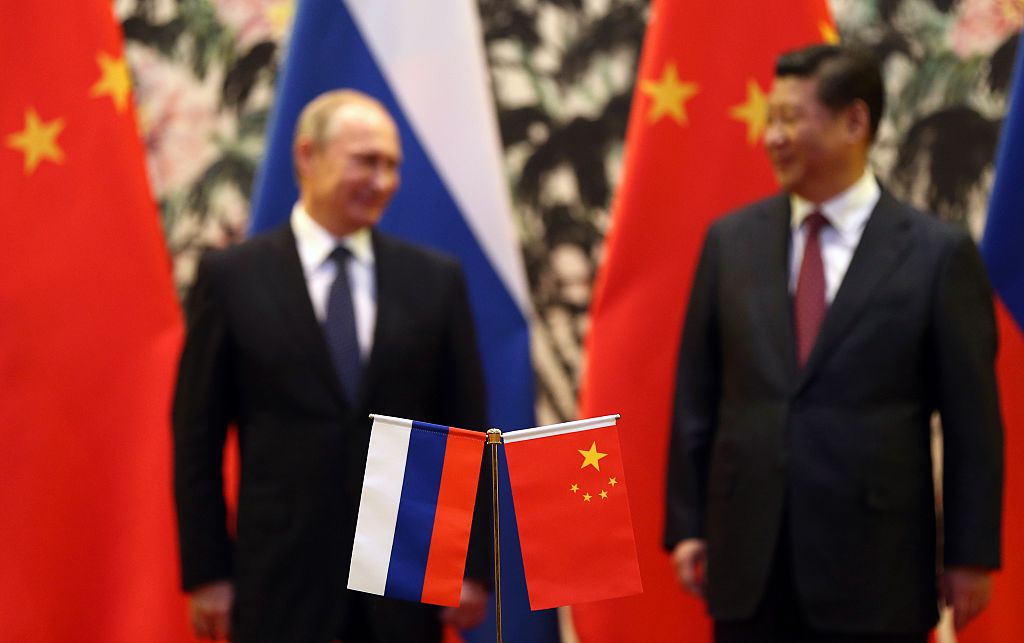
In recent years, publishers have released a deluge of new books on relations between China and the United States, some predicting conflict and others offering formulas for maintaining peace. Surprisingly, however, there have been few fresh analyses of Sino-Russian relations, whose warming over the past 30 years has significantly changed the global geopolitical balance.
The relationship is often seen as one of convenience driven by Russia’s need for support for its war of aggression on Ukraine, on the one hand, and China’s interest in Russian energy resources, on the other. The ‘honeymoon’ between the two communist powers in the 1950s was brief; Chairman Mao Zedong and Soviet leader Joseph Stalin disliked each other, and the Sino-Soviet split of the 1960s was followed by years of mutual suspicion. As a result, analysts tend to dismiss the prospects of the current warming turning into a longer-term entente.
In China and Russia: four centuries of conflict and concord, Philip Snow takes a long-term view, noting that historically the two great powers have existed in relative equilibrium, occasionally threatening each other, frequently skirmishing, but never fighting a major war. Snow is a Hong Kong–based historian and has published several acclaimed books on China’s international relations.
The fact that China and Russia have a long common border on the Eurasian landmass sets their relationship apart from China’s historical relations with Western powers, which approached China from the sea with a focus on trade. Snow traces Sino-Russian relations back to the caravan trade of the 1600s and details the territorial push and pull between tsarist Russia and Qing dynasty China in the 1800s in the border regions of Manchuria, Outer Mongolia and Xinjiang.
Snow anchors his narrative firmly in geopolitical realities, including the ambitions at different times of the Western powers, Imperial Japan and Hitler’s Germany. The rise of Bolshevism in Russia brought with it an element of ideological affinity and a swarm of White Russian refugees. In the 1920s, the Soviets micromanaged the rise of China’s first political parties, the Nationalists and the Communists, and encouraged them to cooperate. Russia wanted to keep the colonising powers out of China and prevent their intervention in support of the Whites in its civil war.
Once the People’s Republic was established, the Soviets worked hard to control the levers of power. They helped set up China’s administration and provided hundreds of advisers to assist the newly established ministries. The Soviets even taught the guerrillas-turned-diplomats how to wear Western clothes and dance. In 1951, China set up a Soviet-style State Planning Commission and introduced the hukou household registration system, which was modelled on the Soviet propiska. Soviet technical advice provided the backbone for China’s industrial development.
Snow also recounts how the Soviets directly helped China’s leaders, providing mine detectors to ensure their security in the leadership compound, Zhongnanhai, and Russian toxicologists to check the dishes they were served. It later turned out that the advisers also bugged the leaders’ private residences.
Stalin’s death in 1953 marked a turning point in Chinese attitudes, and a feeling that Mao should take over as the leader of the Marxist–Leninist camp. Soviet leader Nikita Khrushchev’s denouncement of Stalin in 1956 put a further dent in relations, as Mao’s authoritarianism was based directly on the model of his Soviet mentor. Mutual accusations accelerated, and by 1960 the countries were on a collision course and Moscow had withdrawn its advisers.
Snow describes the myriad plots and subplots underlying the relationship, and peppers his narrative with little-known facts. At an early stage, Mao tried to learn Russian but was unable to master its alphabet or grammar. And on Khrushchev’s first visit to China, Mao kept him waiting, partly in retaliation for the shoddy reception Stalin had given him in Moscow years earlier. Mao eventually received Khrushchev in his private swimming pool, knowing full well that the Soviet leader couldn’t swim and would have to use an inflated rubber ring.
The relationship is underpinned by common authoritarian values. These include respect for each other’s borders and ‘the right of national rulers to do what they want with their populations within their borders’, which flies in the face of Western notions of political accountability. The current ‘comprehensive strategic partnership’ between Chinese leader Xi Jinping and Russian president Vladimir Putin has been three decades in the making, and shows no signs of weakening, with China refusing to condemn Russia’s intervention in Ukraine. The partnership is bolstered by the fact that US relations with both countries have been at an all-time low.
That said, the relationship is one of ‘surface unanimity masking a persistent underlying friction’. The countries’ economic and demographic imbalance is a particular hazard. China sees Russia as a ‘resource appendage’, and China’s built-up northeast borders directly on the resource-rich and sparsely populated Russian Far East. Geopolitical movements among the major powers—or leadership change—could easily trigger a shift.
Sweeping in scope, thoroughly researched and elegantly written, Snow’s book fills a major gap in the literature and is well placed to become the definitive text on Sino-Russian relations.

